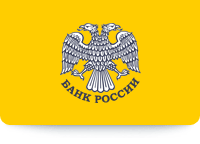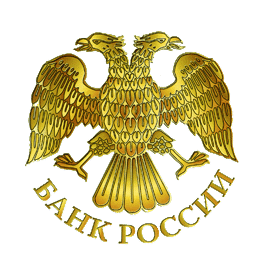
The Central Bank of Russia (CBR) has widened the trading band it uses to control the value of the Ruble against other currencies in a bid to stem foreign currency outflows from the beleaguered nation.
The bank intervened to defend the ruble on Tuesday and again earlier today after the USD/RUB currency cross breached the bank's trading band. Since yesterday, the new corridor for the CBR's euro-dollar basket has been extended from 35.65 - 44.65, compared with 35.60 - 44.60 previously. The central bank has shifted the ruble's trading band by at least 20 kopecks since October 3rd.
On Tuesday, the bank announced it had spent $980 million defending the ruble last Friday before FX market close, but the bank has yet to release data for the amount it has spent since the start of this week. Once the CBR spends $350 million defending the currency, the central bank shifts the band by 5 kopecks.
The largest source of U.S dollar demand within Russia is coming from companies that have limited access to international capital markets and therefore cannot obtain U.S dollars to be used to pay obligations such as bond coupon Payments or simple business transactions that require U.S dollars.
Large multinational firms that have diversified global operations are generally able to avoid capital restrictions but smaller businesses and Small and Medium Enterprises (SME’s) are experiencing a severe shortage of foreign currency – primarily U.S dollars but also Euro's. The blame for the current difficulties facing many Russian export businesses is largely linked to sanctions applied by the United States and other global organisations.
Caught in a Pincer Movement
The ruble currency has been caught in a vice grip with falling oil prices on one side and risk aversion towards Russian assets on the other, both effects exacerbating the negative effects on ruble denominated markets. Oil and gas contiune to rule the roost in Russian economics with suppressed oil (and other commodity) prices taking away highly sought after revenues and foreign currency reserves.
Forex Magnates research suggests open market operations done by the CBR over the past few days range between $1.5bn – $2bn amidst the heaviest batches of intervention (and on a more frequent basis) since March, the spark of the Ukrainian/Crimea debacle. Since the beginning of October, the bank has shifted the ruble’s trading band five times.
Speculator selling of Rubles in favour of U.S dollars and corporate demand for physical currency are pushing the ruble to new lows on almost a daily basis. Against the U.S dollar, the ruble is trading at multiyear lows around 40.00 and is currently on target to close lower against the U.S dollar for the 13th consecutive week. Against the Euro, the ruble is trading above 50.00 for only the second time since 2008. Russian stocks are trending lower backed by suspicious investor sentiment - the MICEX Index is 9% lower since the start of September.
Macro Does It
Russia’s rate of economic growth is not likely to exceed 1% in 2014 as the country remains politically tangled in economic sanctions and is being undermined by falling commodity and metals prices. The last time Russia had such low levels of GDP growth was in 2009, a time personified by the effects of the global financial crisis.The weakness in economic growth has been accompanied by mass outflows of capital overseas—the total “may reach $100 billion” in this year alone, according to the CBR.
Meanwhile, Russia’s inflation rate is going up due to the ruble’s weakness and political developments that have included tit-for-tat trade restrictions such as the banning of food imports from countries that are appeasing the sanctions levied by the United States.
The CBR has already raised interest rates three times in 2014 to thwart consumer prices and keep them close to the bank’s target of 6.5%. However, in September, the bank admitted consumer prices are rising at a rate of 8% year-on-year.
The CBR is likely to raise interest rates again later this year especially if capital outflows persist at their current levels. As investors become increasingly concerned about the perceived risk of holding ruble denominated assets, it is highly likely that the most profound factor that may alleviate fear is higher rates of return in the form of higher interest rates.
Paddling Upstream
With negative externalities raining down on the Russian economy, a monetary policy meeting scheduled for October 30th may be a date the CBR does not have the patience to wait for. With so much uncertainty and fearful investor sentiment, a surprise interest rate hike could be what the CBR interprets as the elixir to sure up investor confidence. In the past, such manoeuvres have successfully jolted markets back on track - both in terms of price action and psychological effect in the immediate and short-term.
However, in the medium-long term, fighting the tide in international capital markets via currency intervention (as evidenced by the Bank of Japan, Swiss National Bank and Central Bank of Brasil) is counter-productive and increasingly resource intensive. Resistance is futile.
















